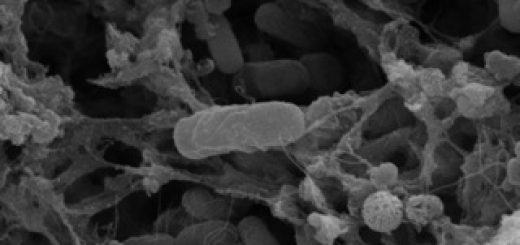Cycling to Work – A Scientific Assessment
Adam Stock assesses whether cycling to work is as healthy as it seems.
It is a commonly accepted fact that cycling, like any exercise, is good for your health. Cycling to work has therefore been actively encouraged by the government with the introduction of the cycle to work scheme a high profile example. However, with the high levels of air pollution in cities such as Glasgow, do these health benefits outweigh the risks, and are cyclists too much of a risk to others?
Health Benefits
Cycling to work is actively encouraged by the government as a good way to increase your daily exercise and hence make you fitter and healthier1. Some commonly cited benefits of cycling to work include:
- It is a low impact form of exercise, saving your joints from damage
- It is inexpensive, often in fact saving you money
- By cycling to work you do not have to spend as much leisure time keeping fit.
With obesity a growing problem in the UK, especially so in Glasgow, you would be forgiven for thinking this is a straightforward ‘no-brainer’, however there are a number of other factors that are often ignored.
Health Risks
One argument is that because cyclists are engaged in exercise, they breathe more deeply than pedestrians or car and public transport users. This means that the pollution in the air can be drawn in deeper into the lungs and cause more damage.
Work by Brunekreef2 highlights the effect of low air quality. This study gave results that “…indicate that in healthy young men vigorously exercising outdoors, ozone is related to lung function changes and acute respiratory symptom changes at low levels of exposure.” In another study, Carlisle and Sharp3 found that “Athletes and exercisers should avoid exercising by the road side even though levels of the more noxious air pollutants have been controlled in the United Kingdom.”
These studies suggest cycling to work may not be as beneficial as many assume. It could be argued that more people cycling to work would lead to a reduction in pollution, in turn benefiting health. However, this relies on a massive change in the behaviour of many people and so doesn’t work as an argument for an individual to start cycling. On top of this there is the risk of traffic accidents, with many cyclists able to tell you about a number of ‘near misses’ or worse.
So is it good for me or not?
The pros and cons of cycling to work may have left you with the question ‘is cycling to work good for me or not?’ Happily, science has the answer. A study completed in 2010 in the Netherlands4 has taken the factors discussed above and completed a health analysis. The study concluded that the benefits of cycling outweigh the risks, and also noted that “Policies stimulating cycling are likely to have net beneficial effects on public health” which is good news for cyclists.
Risk to Others?
If you browse most public forums that mention cycling you will undoubtedly encounter at least one post along the lines of ‘cyclists are a risk and a menace to pedestrians!’ How valid is this view? Are cyclists a major risk to pedestrian safety? The department of transport completed a study that showed that from 1998 to 2005, an average of less than one pedestrian per year was killed by cyclists whilst on pavements or pedestrian crossings. To put this in perspective, an average of one hundred and fourteen per year were killed by cars, lorries, vans and buses whilst on the pavement or a pedestrian crossing. In total there were 22 pedestrian deaths involving cyclists over the eight years and 6312 caused by motorists5. Unfortunately it can be hard to measure how many cyclists there are compared to motorists, however, so long as the ratio of cyclists to motorists is greater than 3:1000 (an estimate by the Scottish government put it at over ten times this in urban areas6) then cycling is statistically safer for pedestrians. So it would seem that cycling may also be of benefit to pedestrians, as well as the cyclists themselves.
What is being done in Glasgow?
As many cyclists in Glasgow will tell you, pot holes large enough to knock you off your bike are not rare and there are still a few cycle lanes seem poorly planned at best, despite the Scottish government’s ‘Designing Streets’ policy document7, which states that road designers “should consider pedestrians first and private motor vehicles last”.
However, it is far from all bad news. There are 375 kilometres of cycle routes available in Glasgow according to the council website and a local campaign group called Go Bike has formed to lobby the council on cycling related issues8. On top of this, the council has a number of new schemes that will come to fruition soon.
The first of these is called ‘Connect2’– a scheme to complete the famous “bridge to nowhere” to provide a direct link from the west end to the city centre, without cyclists having to use roads at all. The first phase of the scheme is due to be completed in spring this year and will provide the link from Kelvingrove Park to Anderston and the completion of the bridge is scheduled for spring 20129.
A further scheme is the “smarter choices, smarter places” scheme that aims to encourage cycling in the east end of the city by improving both the cycle routes and by educating people as to the benefits of cycling10.
The council also takes part in bike week annually and received the first prize from ACT Travelwise for their efforts in 2010 (the coverage last year was somewhat overshadowed by the papal visit).
Perhaps the most useful (and comparatively cheap) new idea however, is to produce maps of the local area that give detail of both the traffic density and the gradient of the streets, the two factors the council have identified as the most off-putting for potential cyclists.
Elsewhere on this website you may have read Conaill Soraghan’s excellent article about Sustainable Glasgow. As part of this scheme, it is proposed that district heating schemes be developed. This heating system would require long lengths of pipes and the current proposals suggest the idea of running cycle paths along these routes11. If this was done then there would be a very large increase in the total length of cycle lanes available, especially valuable as these would not run alongside roads and would therefore benefit from better air quality.
A Note on Road Tax
Motorists who claims that cyclists can’t complain about roads as they ‘don’t pay road tax’ should perhaps be made aware that road tax was abolished in 1937 and car tax, which is the current tax for car owners, is now linked to emissions. A bike emits zero green house gas and would be eligible for zero car tax if it were classed as a car12. When added to the facts that no tax is ‘ring-fenced’ to pay for the roads and that, due to their low weight, bicycles contribute a tiny fraction of the damage to roads caused by cars, the ‘you don’t pay road tax’ argument seems somewhat flawed.
Conclusions
It would seem that despite the risks posed by pollution and traffic, the health benefits of cycling outweigh the risks and the monetary benefits add to the appeal. Perhaps, with the help of the local government and lobby groups, Glasgow can become the cycling capital of Scotland and become a healthier and greener city.
References
- www.nhs.uk/Livewell/fitness/Pages/Cycling.aspx
- Brunekreef B, Hoek G, Breugelmans O and Leentvaar M, Am J Respir Crit Care Med, 1994, 150, 4 p962-966
- Carlisle A and Sharp N, Br J Sports Med, 2001, 35, 4, p214-222
- Johan de Hartog J, Boogaard H, Nijland H and Hoek G, Environ Health Perspect, 2010 118, 4, p1109-1116
- www.gmcc.org.uk/main/wp-content/uploads/issue5_200702poth.pdf
- www.scotland.gov.uk/Resource/Doc/316212/0100657.pdf
- www.scotland.gov.uk/Resource/Doc/307126/0096540.pdf
- www.gobike.org/
- www.sustrans.org.uk/what-we-do/connect2/schemes/scotland/glasgow-completing-the-bridge-to-nowhere
- www.glasgow.gov.uk/en/Residents/GettingAround/SmarterChoices/smarterchoicesinfrastucture.htm
- www.sustainableglasgow.org.uk/
- www.ipayroadtax.com










